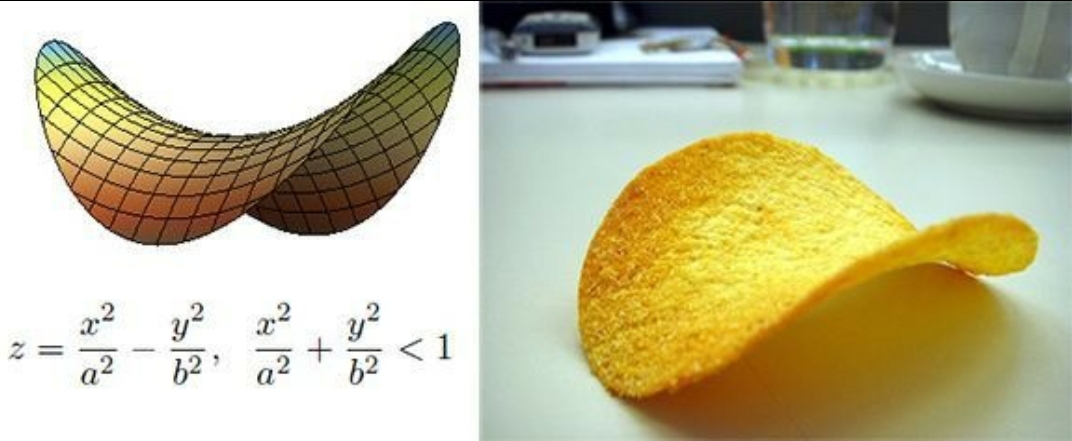The consistent saddle shape of Pringles is mathematically known as a hyperbolic paraboloid . Their designers reportedly used supercomputers to ensure that the chips’ aerodynamics would keep them in place during packaging and that they would not break when being stacked on top of each other.
. Their designers reportedly used supercomputers to ensure that the chips’ aerodynamics would keep them in place during packaging and that they would not break when being stacked on top of each other.
In 1956, Procter & Gamble assigned a task to chemist Fredric J. Baur: to develop a new kind of potato chips to address consumer complaints about broken, greasy, and stale chips, as well as air in the bags. Baur spent 2 years developing saddle-shaped chips from fried dough, and selected the tubular can as the chips’ container. Gene Wolfe, a mechanical engineer and author known for science fiction and fantasy novels, helped develop the machine that cooks them.
A classic example of a heavily tech-focused solution to ingeniously solve customers’ problems in a non-tech industry (and that too, in 1956).
